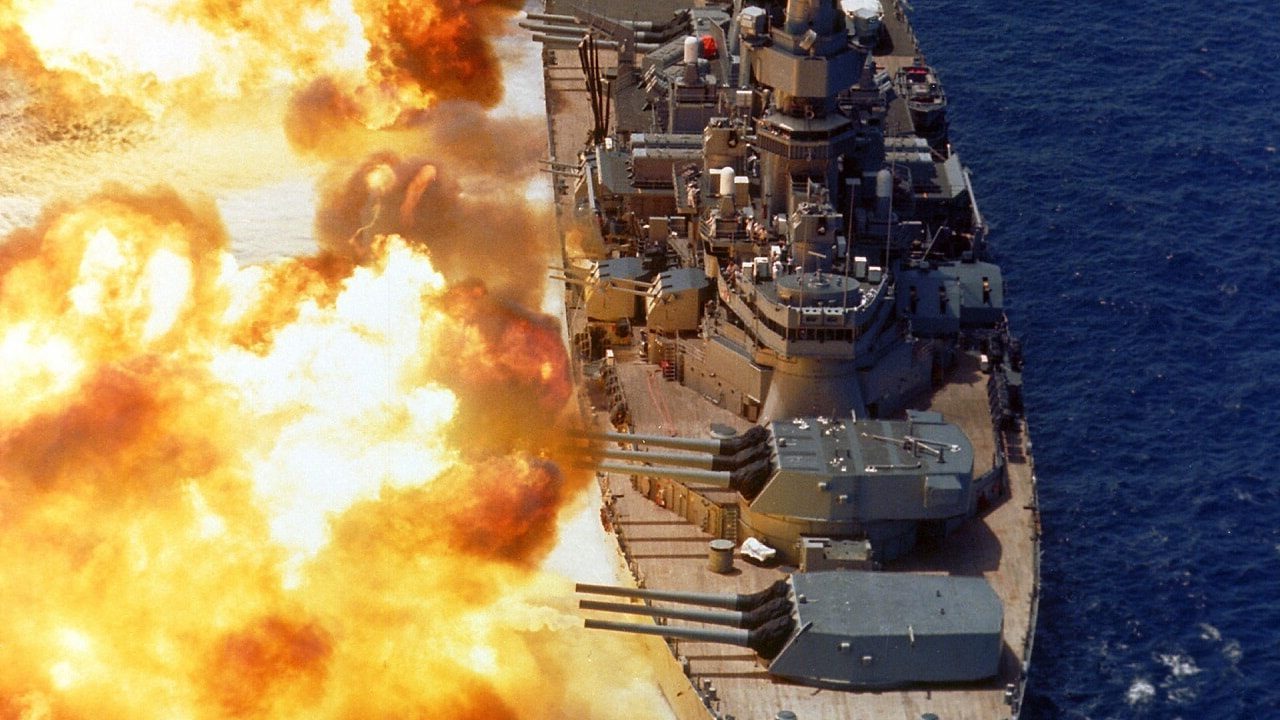Repairs to the Royal Navy’s aircraft carrier HMS Prince of Wales continue, and the efforts could allow the NATO flagship to resume duties this summer.
However, halfway across the world, another HMS Prince of Wales has been the focus of the British press this week as it was reported that China may be conducting an illegal salvage operation of the battleship that was sunk by Japanese aircraft on December 10, 1941.
While various efforts have been made to locate the sites of warships sunk in past conflicts, the wrecks are generally considered off-limits to salvage operations as these are the war graves of the sailors who died onboard.
Yet, the possible illegal operation is being conducted on HMS Prince of Wales (53) and the Royal Navy battlecruiser HMS Repulse – also sunk by Japanese bombers just days after the attack on Pearl Harbor – in an effort to recover the steel, aluminum, and brass fittings.
In total, 842 sailors were lost on the two warships; while the shipwrecks, located in Malaysian waters, are now officially designated as war graves.
The Chinese vessel Chuan 68 had been spotted lurking illegally over the site this month, apparently attempting to dredge up the high-quality steel that was used to manufacture the hulls of the two warships.
The Loss of HMS Prince of Wales in WWII
The Royal Navy had sent the warship to the Far East in the fall of 1941 as a show of force to stand up to Japanese aggression. Three days after Pearl Harbor, off the coast of British Malaya, the 35,000-ton King George V-class battleship HMS Prince of Wales was sunk along with the battlecruiser HMS Repulse.
Built at Birkenhead, England, and only completed in March 1941, she was rushed into action in late May to help hunt down and subsequently sink the German battleship Bismarck. She had received significant damage, but following repairs, the battleship carried Prime Minister Winston Churchill across the Atlantic to Newfoundland. From August 9 to 12 of that year, Churchill was joined by U.S. Franklin D. Roosevelt for the Atlantic Charter conference, the first meeting between the two English-speaking leaders in what was emerging as the “Great Alliance” against Germany and Japan.
It was tragically later that year that Prince of Wales and Repulse became the first capital ships to be sunk solely by naval air power while at sea. The age of the battleship had come to an end.
“In all the war, I never received a more direct shock,” Churchill recalled in his post-war memoirs. “As I turned over and twisted in bed the full horror of the news sank in upon me. There were no British or American ships in the Indian Ocean or the Pacific except the American survivors of Pearl Harbour, who were hastening back to California. Across this vast expanse of waters, Japan was supreme, and we everywhere were weak and naked.”
A Second Loss of the Warships
The British press has noted that the crew onboard the Chuan 68 is well known as illegal scavengers, and this has been seen as a very personal attack on the Royal Navy and its legacy.
“These are burial sites with all the bodies still there. These Chinese wreckers or scrap metal men don’t give a damn about this,” Admiral Lord Alan West, the former head of the Royal Navy – who also lost 22 men when his frigate HMS Ardent was sunk during the Falklands War in 1982 – told the Daily Mail. “It’s a loathsome thing to do. It’s very distressing for the families and next of kin of those sailors killed on HMS Repulse and HMS Prince of Wales.”
To date, only the bells of the two warships were officially recovered. Both are in the collection of the National Museum of the Royal Navy at the Portsmouth Historic Dockyard. The bell to HMS Prince of Wales is now on display.
This incident has cast a spotlight on such illegal salvage operations of historic wrecks.
“We are distressed and concerned at the apparent vandalism for personal profit of HMS Prince of Wales and HMS Repulse. They are designated war graves. We are upset at the loss of naval heritage and the impact this has on the understanding of our Royal Navy history,” Professor Dominic Tweddle, director general of The National Museum of the Royal Navy, said in a statement. “What we need is a management strategy for the underwater naval heritage so that we can better protect or commemorate these ships. That may include targeted retrieval of objects.”
Tweddle further called upon the Royal Navy to develop a policy that can help research and manage the more than 5,000 wrecks before they are lost forever.
“A strategy is vital to determine how to assess and manage these wrecks in the most efficient and effective manner,” he added. “Above all, we must remember the crews who served on these lost ships and all too often gave their lives in the service of their country.”
In addition to the British vessels, the same waters off Indonesia and Singapore contain wreckage sites of 40 Australian, Dutch, and Japanese warships and merchantmen that have already been destroyed, USNI News reported.
The same Chinese vessel has been wanted by Indonesian authorities for plundering the remains of sunken Dutch warships HNLMS De Ruyter, HNLMS Java, and HNLMS Kortenaer in the Java Sea.
FROM 19FortyFive: Is Russia’s Su-57 Felon Stealth Fighter a Total Bust?
FROM 19FortyFive: Merkova: Israel Has A Super Tank
Author Experience and Expertise
A Senior Editor for 19FortyFive, Peter Suciu is a Michigan-based writer. He has contributed to more than four dozen magazines, newspapers, and websites with over 3,200 published pieces over a twenty-year career in journalism. He regularly writes about military hardware, firearms history, cybersecurity, politics, and international affairs. Peter is also a Contributing Writer for Forbes and Clearance Jobs. You can follow him on Twitter: @PeterSuciu.

